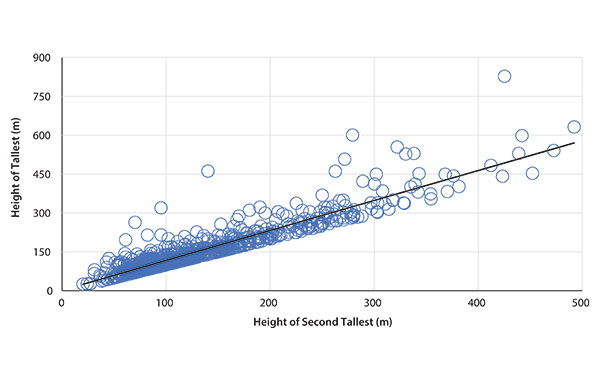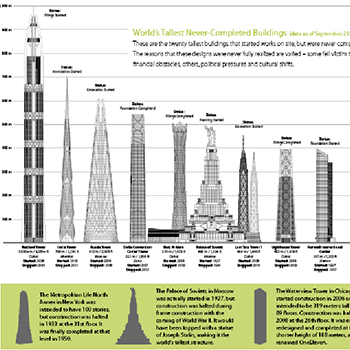Metropolitan Life Towers
New York City
- CTBUH Drawing
- Facts
-
Metrics
You must be a CTBUH Member to view this resource.
To Tip:
Height is measured from the level of the lowest, significant, open-air, pedestrian entrance to the highest point of the building, irrespective of material or function of the highest element (i.e., including antennae, flagpoles, signage and other functional-technical equipment).Architectural:
Height is measured from the level of the lowest, significant, open-air, pedestrian entrance to the architectural top of the building, including spires, but not including antennae, signage, flag poles or other functional-technical equipment. This measurement is the most widely utilized and is employed to define the Council on Tall Buildings and Urban Habitat (CTBUH) rankings of the "World's Tallest Buildings."
Above Ground
The number of floors above ground should include the ground floor level and be the number of main floors above ground, including any significant mezzanine floors and major mechanical plant floors. Mechanical mezzanines should not be included if they have a significantly smaller floor area than the major floors below. Similarly, mechanical penthouses or plant rooms protruding above the general roof area should not be counted. Note: CTBUH floor counts may differ from published accounts, as it is common in some regions of the world for certain floor levels not to be included (e.g., the level 4, 14, 24, etc. in Hong Kong).Official Name
Metropolitan Life Towers
Type
Complex
Status
Completed
Country
City
Function
hotel / office
# of Hotel Rooms
273
Map of Buildings in Complex
Note: Only buildings that have GPS coordinates recorded are displayed.
List of Buildings in Complex
|
RANK
|
Name
|
Completion
|
Height
|
Floors
|
Function
|
|---|---|---|---|---|---|
| 1 | Metropolitan Life Tower | 1909 |
213 m / 700 ft |
50 | Hotel / Office |
| 2 | Metropolitan Life North Building | 1950 |
137 m / 451 ft |
31 | Office |
| 3 | Metropolitan Life North Annex | - |
- m / - ft |
100 | Office |
CTBUH Initiatives
Height: The History of Measuring Tall Buildings
16 December 2009 - CTBUH News
Research

16 May 2023
The Economics of Record-Breaking Height
Jason Barr & Peter A. Weismantle
This paper reviews the development history of record-breaking skyscrapers to better understand their economics. Given how tall they are, the supposed reason for their construction...
Research

16 May 2023
The Economics of Record-Breaking Height
Jason Barr & Peter A. Weismantle
This paper reviews the development history of record-breaking skyscrapers to better understand their economics. Given how tall they are, the supposed reason for their construction...

12 June 2008
The Tallest Buildings in the World: Past, Present & Future
CTBUH Research
Over time, the average height of the 100 tallest buildings in the world has been steadily increasing. However, by 2010, this average height will have...

06 November 2014
Dream Deferred: Unfinished Tall Buildings
CTBUH Research
Without big dreams, there would be no tall buildings. Conceiving, financing, designing, and constructing a skyscraper is no simple feat, even under the best of...





